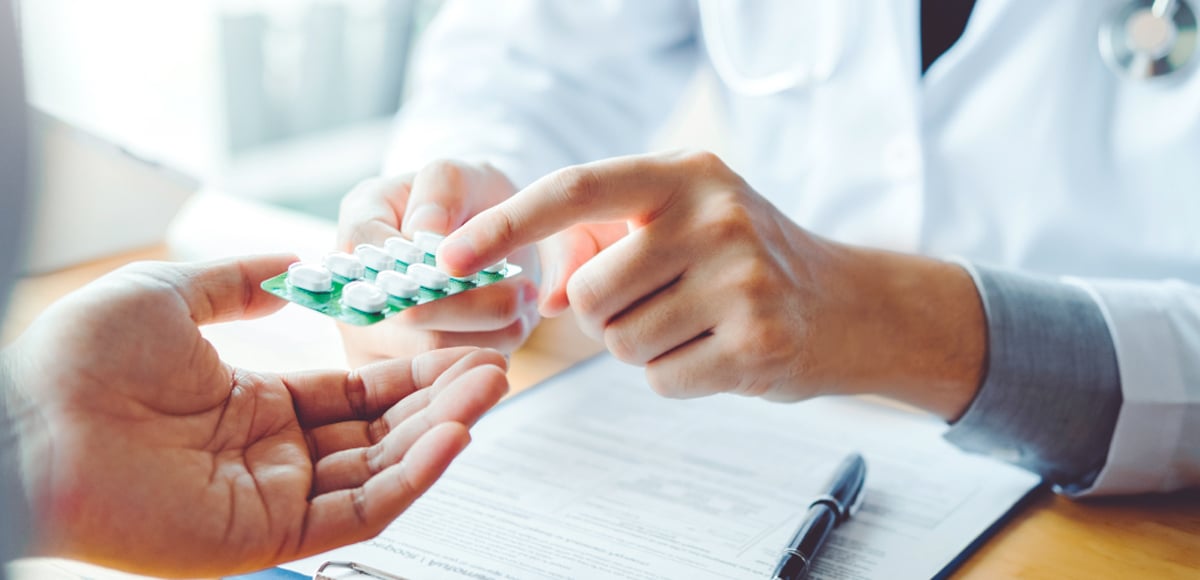Whether you have a short illness or a chronic condition, if your doctor prescribes medication for it, it’s important you take it the right way. If you don’t, your illness might last longer, or your chronic condition won’t improve—and may even get worse. Here’s how to make sure you’re on track with your medication plan.
What Is Medication Adherence?
Medication adherence is taking your medication as prescribed. A 2018 article in The Permanente Journal reported that roughly 40 – 50 percent of Americans don’t follow doctors’ orders when it comes to taking their medications. For those with chronic conditions, this can have serious consequences. The same article reported that medication nonadherence—not taking your medicine as directed—causes an estimated 125,000 preventable deaths.
Taking your medicine as prescribed can also help you save money. For example, patients with higher adherence to medications for congestive heart failure saved an estimated $7,800 a year in healthcare spending compared to those with lower medication adherence, according to the CDC. For people on high blood pressure medications, the CDC reports $3,900 in savings; for those on cholesterol medications, the savings was $1,250.
Adherence Problems & Solutions
Although people want to take their medications as prescribed, barriers can get in the way. Having a pharmacist who knows you and your medical needs can help address some of these issues. Below are some common hurdles to medication adherence and solutions that can help.
Problem: You’re experiencing side effects from the medication, so you stop taking it.
Solution: Call your pharmacist and ask about side effects. They can see whether it’s a common side effect they can help you manage or if it’s a more serious side effect that requires calling your doctor. Simple solutions, such as taking your medication
before bed instead of in the morning or taking it with some food, can help you manage side effects like nausea or headaches. Don’t stop taking your medication without talking to your doctor first. Stopping certain medications suddenly can cause serious side effects. Your doctor can help you taper off your medications slowly.
Problem: The medicine is hard to swallow due to its size or taste.
Solution: For some larger pills, you can use a pill splitter. For others, your pharmacist can see whether smaller pills or a liquid version are available. They can also add flavoring to mask the taste.
Problem: You have trouble opening the medication container.
Solution: Your pharmacist can put your medication into easy-open bottles or packets. To prevent medication poisoning, keep these out of the reach of children.
Problem: You keep forgetting to take the medication.
Solution: If you take multiple pills several times daily or have memory issues, you may benefit from some sort of formal tracking system. Pill containers labeled with the days of the week can help you keep track. Many pharmacies can provide you with easy-to-open packets that are labeled with the day and time you need to take each. Additionally, the My GNP mobile app provides digital reminders to take your medicine.
Problem: You can’t afford your medication, so you don’t fill your prescription, stop taking it, or skip days.
Solution: Your doctor or pharmacist can see if there’s a manufacturer’s coupon or program to help pay for your prescription. You can often switch to a generic version of the drug. Generic medications work the same as brand-name drugs but often cost much less. If your insurance allows it, filling a 90-day supply can also save money.
Problem: You can’t always get to the pharmacy in time to fill your prescription.
Solution: Your pharmacist can set up home delivery of your medications.
Lastly, make your pharmacist part of your healthcare team. They can do a medication review to prevent potential issues and answer any medication questions to improve your adherence.
Source: Good Neighbor Script, July 2022

0 Comments